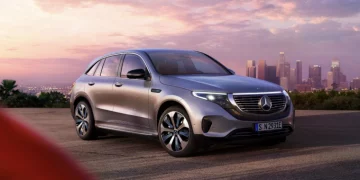Introduction: Europe’s Bold Move Towards Electric Vehicles
The shift toward electric vehicles (EVs) is not just a technological evolution, but also a critical component of global strategies to address climate change and air pollution. Europe, in particular, has emerged as a global leader in EV adoption, driven largely by a set of bold and forward-thinking policies. These policies, including the European Green Deal, have established a comprehensive framework that not only incentivizes the purchase of electric vehicles but also encourages the development of EV infrastructure, supports manufacturers, and aims to significantly reduce carbon emissions across the continent.
In this article, we will explore the various policies and strategies implemented by European nations and the European Union (EU) that have positioned the region as a pioneer in the transition to electric mobility. We will examine the European Green Deal, government subsidies, emissions regulations, and other initiatives that have spurred the rapid growth of electric vehicle adoption in Europe. Furthermore, we will look at the challenges that remain and how these policies are shaping the future of sustainable transport in the region.
The European Green Deal: A Comprehensive Approach to Sustainability
1. What is the European Green Deal?
In December 2019, the European Commission unveiled the European Green Deal, a roadmap to make Europe the world’s first climate-neutral continent by 2050. This ambitious plan includes a wide range of measures aimed at reducing greenhouse gas emissions, promoting renewable energy, and ensuring environmental sustainability across all sectors. A central element of the Green Deal is the decarbonization of the transportation sector, which is responsible for nearly a quarter of Europe’s emissions.
One of the key pillars of the European Green Deal is the promotion of electric vehicles. By encouraging the transition from fossil fuel-powered cars to electric vehicles, the EU aims to reduce CO2 emissions from the transport sector and align with its broader climate objectives. This initiative has set the stage for a dramatic increase in electric vehicle adoption across Europe and has spurred both public and private sector investments in EV infrastructure and innovation.
2. Setting Emission Reduction Targets
The European Green Deal’s ultimate goal is to achieve net-zero carbon emissions by 2050. As part of this initiative, the European Union has set ambitious intermediate targets to reduce emissions in the short and medium term. For example, by 2030, the EU aims to reduce greenhouse gas emissions by at least 55% compared to 1990 levels. The transportation sector, as one of the largest sources of emissions, is expected to play a critical role in meeting these targets.
To achieve these goals, the EU has implemented a series of emissions standards that target vehicle emissions. These regulations require automakers to meet strict CO2 emissions targets for new cars and vans, progressively reducing the acceptable level of emissions. This regulatory framework has created a strong incentive for manufacturers to shift their focus toward producing electric vehicles, which produce zero emissions at the tailpipe.
3. The European Green Deal’s Focus on EV Infrastructure
In addition to supporting the development of electric vehicles, the European Green Deal places significant emphasis on the expansion of EV charging infrastructure. The EU recognizes that the availability and accessibility of charging stations are critical for the widespread adoption of electric vehicles. Therefore, the Green Deal has allocated funding to support the installation of charging points across Europe, particularly in urban areas, highways, and rural regions.
By 2030, the EU aims to have 3 million public charging points across its member states, which would make electric vehicle ownership more practical and convenient for consumers. The push for infrastructure development is not limited to charging stations but also includes investments in smart grid technologies and renewable energy sources to power EVs sustainably.
Financial Incentives and Support for Electric Vehicles
1. Government Subsidies and Tax Incentives
A critical driver of electric vehicle adoption in Europe has been the widespread availability of financial incentives and subsidies. Many European countries offer direct subsidies or tax breaks to consumers who purchase electric vehicles, making EVs more affordable compared to their internal combustion engine (ICE) counterparts.
For instance, countries like Norway, the Netherlands, and Germany provide generous incentives, including tax exemptions, subsidies, and rebates for electric vehicle buyers. In Norway, EV buyers benefit from exemptions from VAT (Value Added Tax), toll fees, and road taxes, making the country a global leader in EV adoption on a per capita basis. Similarly, in the Netherlands, electric vehicle buyers are granted tax breaks and rebates, reducing the upfront cost of EVs.
In addition to consumer incentives, governments in Europe have also provided financial support to automakers to help them transition to EV production. For example, the EU has invested in research and development programs focused on EV technology, battery production, and green manufacturing processes. These efforts are aimed at ensuring that European automakers remain competitive in the global electric vehicle market while meeting environmental and regulatory standards.
2. Incentives for EV Charging Infrastructure
Recognizing the importance of a robust charging network, many European countries have also provided financial incentives for businesses and local governments to install electric vehicle charging stations. For instance, in France, businesses that install charging stations in their parking lots can receive financial support and tax credits. Similarly, the UK government has launched the “EV Charging Infrastructure Fund,” which offers funding for the installation of charging points in public and private spaces.
These incentives aim to address one of the major barriers to EV adoption: range anxiety. By expanding the charging infrastructure, consumers are more likely to purchase electric vehicles, knowing they will have access to charging stations when needed.

Stricter Emissions Regulations and EV Production Requirements
1. The Role of Emission Standards in EV Adoption
Stricter emissions standards are a crucial element of European policy that has spurred the transition to electric vehicles. In addition to the emissions targets set by the European Green Deal, the EU has introduced the “Euro 6” emissions standards, which place strict limits on the amount of carbon dioxide and other pollutants that new vehicles can emit. Automakers that fail to meet these standards face significant fines, making it economically advantageous for them to produce electric vehicles instead of internal combustion engine vehicles.
The EU’s CO2 emission regulations require automakers to reduce the average CO2 emissions of their fleets. Manufacturers that produce high-emission vehicles must purchase credits from manufacturers producing low-emission vehicles like EVs. This system of credits further incentivizes manufacturers to increase their production of electric vehicles, contributing to the broader shift towards cleaner transportation options.
2. Zero-Emission Vehicle Mandates
Some European countries, such as the United Kingdom and France, have gone even further by setting mandates to ban the sale of new petrol and diesel vehicles by 2030 or 2040. These bold initiatives underscore the commitment to moving away from fossil fuel-powered transportation and accelerating the adoption of electric vehicles. By creating a clear deadline for phasing out internal combustion engine vehicles, these countries are providing a clear signal to consumers, businesses, and automakers that the future of transportation lies in electric vehicles.
The move towards zero-emission vehicles is expected to have a significant impact on the automotive market. As automakers focus on meeting the deadlines for the phase-out of internal combustion engines, they are investing heavily in the research, development, and production of electric vehicles. These regulations ensure that the market for electric vehicles will continue to expand, benefiting consumers, manufacturers, and the environment.
Overcoming Challenges to Electric Vehicle Adoption in Europe
1. Battery Production and Supply Chain Challenges
Despite the significant strides made by European policies in promoting electric vehicles, challenges remain. One of the most significant barriers to the widespread adoption of EVs is the availability of batteries. Currently, the production of batteries is heavily reliant on imports, particularly from countries like China. Europe is working to overcome this challenge by investing in domestic battery production.
The European Union has launched the “European Battery Alliance,” an initiative aimed at creating a competitive battery value chain in Europe. The goal is to ensure that European automakers and energy companies have access to a reliable and sustainable supply of batteries for electric vehicles. This initiative also includes research into improving battery technology, which will help reduce the cost of EVs and increase their range.
2. Public Awareness and Perception of EVs
Another challenge facing the growth of the EV market in Europe is public perception. While the demand for electric vehicles is increasing, there are still some concerns among consumers regarding the affordability, range, and charging infrastructure. To address these concerns, European governments are working to increase public awareness of the environmental and economic benefits of electric vehicles. Advertising campaigns, information programs, and demonstrations are all part of these efforts to educate consumers and encourage EV adoption.
The Future of Electric Vehicle Policies in Europe
1. The Road Ahead: 2030 and Beyond
Looking ahead, European policies are expected to continue pushing the electric vehicle revolution forward. The EU’s long-term climate targets, along with the growing momentum of green initiatives, will likely lead to further tightening of emissions regulations, increased subsidies, and expanded EV infrastructure. By 2030, it is expected that electric vehicles will make up a significant portion of all new car sales in Europe, with some forecasts suggesting that EVs could account for 50% or more of the market share by that time.
2. Global Leadership and Collaboration
Europe’s success in promoting electric vehicles is also influencing other regions. Countries around the world are looking to Europe’s policies as a model for their own efforts to combat climate change and reduce emissions from the transportation sector. Europe’s leadership in EV adoption and its collaborative approach to policy development will continue to shape the global automotive landscape in the years to come.
Conclusion: Europe’s Leading Role in the EV Revolution
Europe’s commitment to electric vehicles is clear: through a combination of progressive policies, financial incentives, stricter emissions regulations, and substantial investments in infrastructure, the continent is leading the way in the global transition to sustainable transportation. The European Green Deal, along with other supportive measures, has created an environment in which electric vehicles are not only viable but are becoming the preferred option for consumers and manufacturers alike.
As Europe continues to strengthen its commitment to sustainability, it is clear that electric vehicles will play a key role in achieving a carbon-neutral future. With the continued support of policies, technological innovation, and global collaboration, Europe will likely remain at the forefront of the electric vehicle revolution for years to come.











































